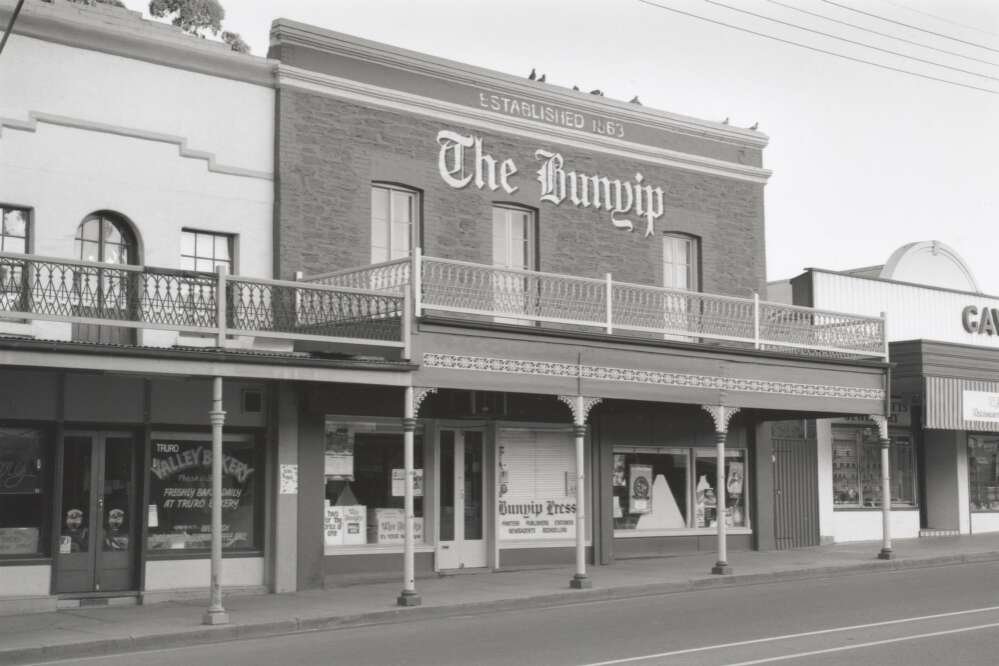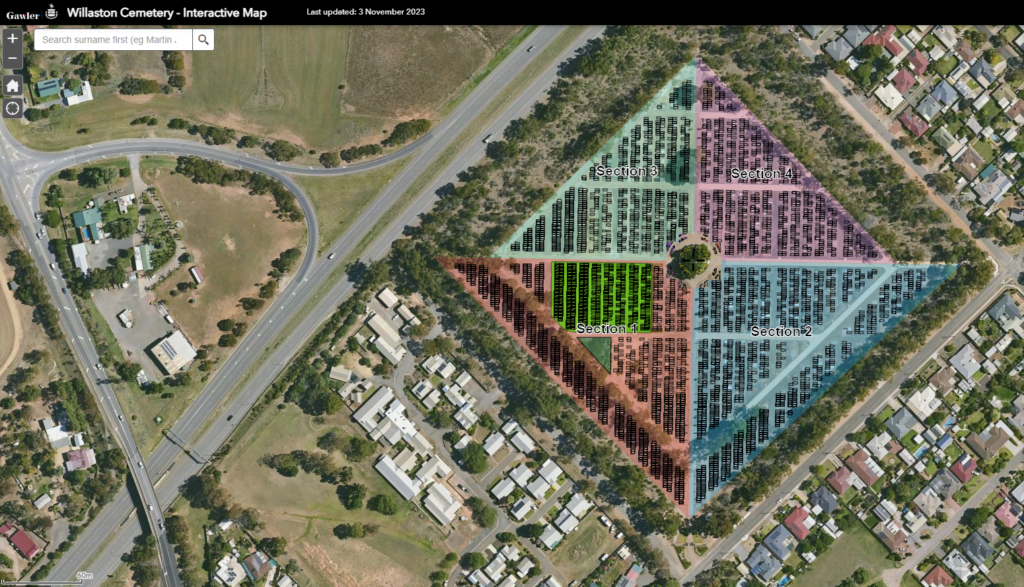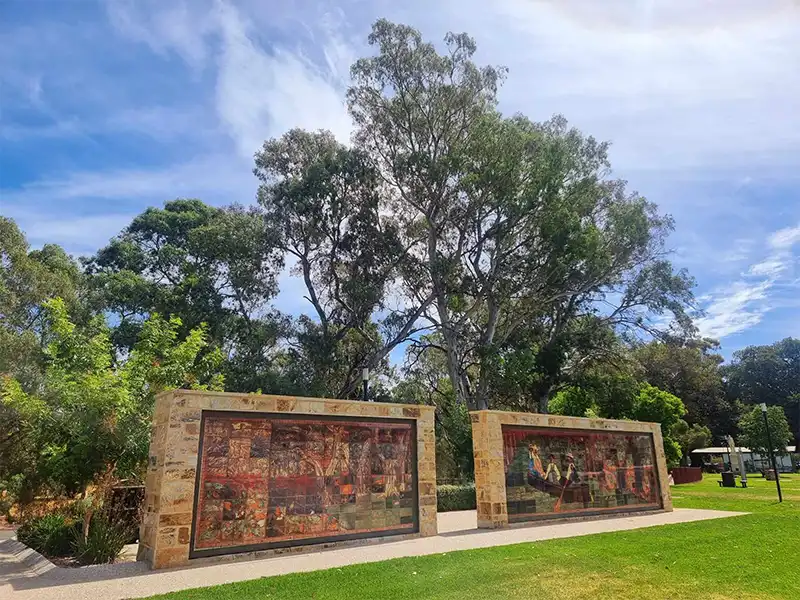
Unveiling Gawler’s Rich Heritage and Legacy
Gawler, South Australia, holds the distinction of being the oldest inland town in the state, offering a captivating blend of historical significance and modern allure. Named after Lieutenant-Colonel George Gawler, who served as governor of South Australia from 1838 to 1841, this charming town stands as a testament to its rich past and vibrant present.
Adelaide to Gawler: Getting there by car
Situated just 47.8 kilometres northeast of Adelaide via the M2, A9, and A20, Gawler serves as a gateway to exploring the cultural and natural treasures of the region.
While the route described above is the shortest option, it’s worth noting that the M2 North-South Motorway, spanning 54.7km, often proves to be the quickest route. This is largely attributed to the fact that the majority of the journey is signposted with a maximum speed limit of 110km/h.
If wishing to take public transport the train from Adelaide leaves nearly every half and hour, more frequent during peak times and every hour on the weekends. An Adelaide to Gawler PDF train timetable is downloadable here. [current of Feb29th 2024]
Delving into Gawler’s History:
Gawler’s history unfolds like a captivating narrative, with each street and landmark revealing tales of bygone eras and prominent figures who shaped the town’s destiny. Laid out by William Jacob according to the design of Colonel William Light, Gawler’s strategic location beside a river and surrounded by picturesque hills earned it the title of the ‘Athens of the South.’
Must-See Attractions in Gawler:

Gawler Historic Main Street Walking Tour:
The Gawler Historic Main Street Walking Tour will immerse yourself in Gawler’s past with a leisurely stroll along Murray Street, Gawler’s main thoroughfare.
Gawler’s Historic Main Street reflects colonel William Lights vision; to create a settlement that could prosper on the banks of the north and south Para Rivers, bounded by rolling hills and within close proximity to Adelaide. Today you can witness the remarkable eras from the historical buildings that line Gawler’s Main Street.
Explore 30 historic sites, including Pioneer Park, the War Memorial, McKinlay Memorial, The Bunyip newspaper office, and more. This self-guided tour offers a fascinating journey through the town’s history. A map of the walk can be downloaded here.
Explore Gawler’s Historic Landmarks: Gawler Town Hall

Immerse yourself in Gawler’s past at landmarks like the Gawler Institute, Gawler Town Hall, National Australia Bank building, and the iconic Golden Fleece Hotel, each offering a glimpse into the town’s evolution.
Cultural Gems of Gawler:
Marvel at the architectural marvels of Gawler, including Essex House Fashion Centre, ANZ Bank building, and Rudall & Rudall chambers, showcasing the town’s rich heritage and craftsmanship.
Nature and Recreation:
Take in the natural beauty of Dead Man’s Pass, relax at Apex Park beside the South Para River, or admire the James Martin Statue near Apex Park, celebrating Gawler’s founding father.
Architectural Marvels with Gawler:
Admire the elegant design of Tortola House, Union Mill Complex, and Waterworks Building, each a testament to Gawler’s architectural heritage.
Historic Churches:
Visit St. Peter and St. Paul’s Roman Catholic Church, Gawler Primary School, St. George’s Anglican Church, and Gawler Congregational Church, reflecting Gawler’s rich religious and educational history.

EH Coombe Walking Tour:
Embark on the EH Coombe Walking Tour to delve into the life and contributions of Ephraim Henry Coombe, a significant figure in Gawler’s history. Covering approximately 4 kilometres and taking about 1.5 hours to complete, this tour offers a delightful blend of history, heritage, and personal anecdotes.
Additional Landmarks on the EH Coombe Walking Tour:
Gawler Bridge
Income Producing Land off Murray Street
Harris’s General Store, Murray Street
EH Coombe Confectioner, Murray Street
The Gawler Institute
Bunyip Office
First Red Brick Cottage in Church Hill
St George’s Parish Hall
Main North Road, Willaston
Burrows Street, Willaston
Wesleyan Church, Willaston

The Gawler Church Hill Walking Tour:
The Church Hill Walking Tour encompasses the area that contained the core of Colonel Light’s 1839 Gawler town plan. Due to its historical significance and the overall state of preservation, this area was declared a State Heritage Area on 7 June 1985, the third such heritage area in South Australia. As you experience the true heritage of Gawler, the attractions will be highlighted, unfolding for you why the area is called Church Hill. A wide array of dwellings and outbuildings reflect grand to humble circumstances of people who created the area during the 19th century. Original slate and bluestone kerbs, historic fire hydrants, and many other treasures of yesteryear will be revealed.
Sites to Visit on the Church Hill Walking Tour:
Presbyterian Church
The Bushman Hotel
Light Square
21 Cowan Street
Congregational Churches
Moore Street/Dundas Street
Lutheran Church Complex
Finniss Street
Porter Street
Gawler Primary School
Orleana Square/Saint George’s Anglican Church
St George’s Hall
St George’s School
Cameron Street
Queen Street
King Street
Albion Flour Mill Mill Stone
McKinlay Memorial
Interactive Cemetery Map in Willaston below

If you’re interested in walking amongst tombstones to reflect on Gawler’s history or wishing to catch up with loved ones, there is an interactive map provided by the Gawler Council that can be visited through this link.
Gawler’s History
History
Prior to the arrival of Europeans, the area now known as Gawler was inhabited by the Kaurna Aborigines.
The town of Gawler was established on 31 January, 1839, making it South Australia’s second country town after Port Adelaide.
Designed by Colonel William Light, the townsite was chosen as a gateway to the state’s north, nestled beside a river and surrounded by rolling hills. Its pleasant environment earned it the nickname ‘Athens of the South’.
In 1839, the Golden Fleece Hotel welcomed its first guests, followed by the opening of the Bushman’s Inn in 1840.
By 1847, Gawler boasted two breweries, and in 1848, the Gawler Arms and St George’s Anglican Church were established, along with a school.
The Union Mill was erected in 1853 by Harrison Brothers, and the Gawler Agricultural and Horticultural Society was formed in 1856.
Gawler was officially proclaimed a corporation in 1857, the same year the railway from Adelaide reached the town.
1863 saw the birth of The Bunyip newspaper, and land around the town was opened for purchase.
The Albion Mill, the town’s third mill, commenced operations in 1868, and the Gawler Institute opened its doors in 1870.
By 1872, Gawler had over 500 children enrolled in its schools, marking a period of growth and development.
During the late 19th century, a boom period ensued, characterized by the construction of numerous elegant buildings that added to the town’s charm and sophistication.
In 1877, the first government school was erected, and by 1880, the town’s three flour mills employed over 150 workers.
In 1881, a tramway was constructed from the railway to the town center, and May Brothers began producing farming equipment in 1885.
By 1889, Gawler was connected to Adelaide by telephone, and Willaston Bridge was opened in 1890.
The turn of the century saw Gawler bustling with more than 100 shops, stores, and workshops, as well as the establishment of the Barossa Water Scheme in 1901.
In 1907, James Martin and Son foundry closed, and by 1908, the Mechanics Institute Literary Society boasted over 500 members.
Electric lighting was introduced in 1912, and in 1921, the Gawler Instrument Company closed while the Gawler South Cinema Pictures opened.
The town experienced industrial slowdowns in the late 1920s, with May Brothers foundry closing in 1927 and Perry Engineering in 1928.
Gawler suffered during the Great Depression in the 1930s, but the Regal Picture Theatre opened its doors in 1935, and the Greater Gawler Council was established in 1933.
In 1962, an Olympic swimming pool was inaugurated, and a new Post Office was erected in 1973.
Today, Gawler thrives as a center in an area characterized by wheat and vineyards, embodying a rich history of growth, resilience, and community development.





